Exploring the Limits of "Organism"
Biological ambiguity.
What is an organism?
Here’s a list of answers.
An individual animal, plant, or single-celled life form.
The material structure of an organism. (Using the word in its own definition. Helpful.)
A system or organization consisting of interdependent parts, compared to a living being.
-Oxford Languages
A complex structure of interdependent and subordinate elements whose relations and properties are largely determined by their function in the whole.
An individual constituted to carry on the activities of life by means of parts or organs more or less separate in function but mutually dependent; a living being.
-Merriam-Webster
A single living plant, animal, virus, etc. (Note the inclusion of “virus” here.)
-Cambridge Dictionary
A single individual, or being, that cannot survive without its parts.
-Biology Dictionary
An entity with life.
-Biology Online Dictionary
Yes, I know it’s bad form to start an essay off with a list of definitions, especially such a long list. Maybe one or two would be fine, but this? This is egregious.
Yet, in case you didn’t notice, not a single one of these sources provides a coherent definition of the word. None of them can actually, confidently draw a line separating all things that count as an organism from all things that do not.
Do we notice any patterns in the ideas on this list? Any contradictions? Do we notice boundaries, or a lack of boundaries, to what an organism can be? What does “with life” mean? What does “being” mean? What is an “individual” “with life”?
Oh dear… I thought we were talking about science, not philosophy.
In almost any discussion of biology or ecology, you’ll find the word organism taken for granted. We all know what it refers to. Although, based on the definitions above, it seems we’re not very able to codify it. It’s just, like… I dunno… it’s a thing.
So I’d like to talk about it. What, actually, is An, A Single, The organism?
For now, I’m picturing this guy I found on one of my canal surveys as The organism. For some reason, iNaturalist wouldn’t ID it.
I recently watched Mugsy Explains’s informative lichen video as part of my effort to refresh my biology knowledge after nine months of manual labor. And it kind of exploded my brain.
Lichens are made up of multiple species. They include a fungus, an algae or cyanobacteria, and sometimes yeast. The fungus relies on its photosynthesizing partner for food and in turn provides structure and anchorage. The fungus would not survive without its partner. The lichen would not exist without each component part.
Lichen on a post (in my post).
Mugsy Explains then says this: “It might not be too big of a stretch to say that ruminants, like deer and cows and sheep, are also, like a lichen, a compound organism, made of multiple species working together. Because if you take that cow and you kill all the bacteria inside its body, it won’t be able to digest food, and it’ll starve to death and die.”
Species classification, in the case of lichen, is complicated by the “compound” nature of the organism. A particular type of lichen can be made up of multiple “actual” species working in concert. It is classified based on the fungus, but if one of those other species changes, the ecological niche of the lichen may be entirely different.
Many animals are structured in the same way, with an animal of a “single” species actually incorporating many species of bacteria, fungus, et cetera that its system could not survive without. Therefore, a creature’s “species” is not only describing its place on an axis of evolutionary history but also, in a sense, the cluster of organisms that make up the one.
So, the question: Can you define such a thing as one organism? Is it an individual life form, a material structure, or a system of interdependent parts? Is it a structure of components largely determined by their function in the whole?
Our Merriam-Webster definition seems to fit the top-down notion of, for instance, a cow as a thing that functions through the work of multiple species, but if that’s so… What about the structures that incorporate the cow itself? The food web, the line from grass to cow to dinnertable, the worms that recycle the cow’s excrement and corpse to earth? Under the “system of parts” definition of organism, where does the organism Cow stop?
Let’s take it back. You could say, no, “compound organisms” don’t exist, that’s just symbiosis, which is a relationship between fundamentally separate things. The cow’s relationship to its microbiome is symbiotic. The actual organism Cow is genetically determined: a cow is made of cow cells.
However, I’d say a cow is basically a machine that turns grass into more cow. A cow without any other species in it could not process grass, could not live in the way a cow lives, and could not survive at all. If you separated every organism that is not a Genetic Cow Cell from a cow, what you would have left would not be a cow.
Even then, where’s the limit of the cow cell? Mitochondria were once free-living prokaryotes before being engulfed and incorporated into host cells. Would Pure Cow Cells then have to be taken apart to remove mitochondria and other components that have, over time, been incorporated into cow cells despite originally being separate organisms?
And if you managed to do that — get rid of everything that is not Pure Genetic Cow Essence — even a significant part of that DNA may be made up of ancient viruses that were incorporated into it over time, as in humans. Are those stretches of once-foreign DNA impermissible in Pure Cow?
So that’s not a valid route to define the limits of Cow. Cow is, instead, an organizational principle uniting the genetic material of cows and the many other things that make cows run.
But there must be a limit to Cow, even when our definition incorporates the cow’s microbiome. After all, not everything is cows, is it?
Pure Cow.
You could go in the taxonomic direction. A cow is a member of the species Bos taurus1. Things that are not cows are not part of that species.
Although… it’s difficult to define “species.” We can try to do it based on reproductive capacity – how able individuals are to produce viable offspring with each other. Most species are reproductively isolated, meaning that individuals are prevented from reproducing with each other due to morphological or genetic barriers. However, some hybrids are able to reproduce, and even hybrid speciation occurs, notably in plants. Many living humans have Neanderthal ancestors – and whether Neanderthals were a separate species or a subspecies is up for debate. The idea of reproductive isolation also straight up doesn’t apply to asexual species.
You could try to say instead that the dividing line lies instead in the traits a group expresses – species are different because of the different niches they fill and traits they express. However, populations within a single species can appear completely different depending on their environment and history. Dogs are all the same species, from Tibetan mastiffs to toy poodles – and, debatably, the same species as wolves. Convergent evolution, on the other hand, means that sometimes entirely unrelated species evolve to fill the same niche and end up looking and living in very similar ways.
The best working definition of species is the phylogenetic species concept, which is a kind of fusion of all of these ideas. It states that a species is a set of organisms descended from a common ancestor and possessing a set of defining traits.
So on a macro level, this is a working definition of Cow. You can say that at one point the cow’s evolutionary line was not cows, and then it became cows. So at one point long ago Cow had an ancestor that was not a cow. But where, then, is the specific divide where one generation of organisms was not cows, and the next was Pure Cow? After all, what did the First Cow breed with?
Speciation is not an instantaneous thing. That stark line doesn’t really exist. The shift into a new species is gradual, shaped by many changes and many environmental pressures over a long period of time. Populations change constantly. We can only really know that speciation happened in retrospect. The species Bos taurus is happening, but it’s less a static category and more a contemporary movement.
So there is no Pure Cow, and there is no solid line dividing things that are cows from things that are not cows. However, when some spotted beast is standing there mooing at you, you know it to be a cow. This single being is a cow. That one thing. That’s The Organism Cow, when you get down to brass tacks. Right?
Let’s leave cows behind for a moment.
A concept that blew my mind in undergrad and continues to blow my mind today is alternation of generations. This one’s difficult to wrap your head around, so I’ll try to clarify through the use of weird sexual analogies. Buckle up.
So humans, and many other animals, exist in a haploid (1 set of chromosomes in each cell) phase only as gametes (sex cells – sperm and egg). Those cells fuse and become a diploid (2 sets of chromosomes in each cell) zygote during sexual reproduction, which develops into an animal2.
In plants (and algae and fungi) that use the alternation of generations strategy, the haploid and diploid phases of the life cycle are basically... separate guys. They’re called a gametophyte (haploid plant) and sporophyte (diploid plant). You might expect the thing you know as the whole plant to be the diploid sporophyte, since it seems like it should be the more complete of the two forms. That does happen, but the haploid gametophyte may actually also be the dominant form of the plant.
For example, the leafy plant you would recognize as moss is the haploid gametophyte in a moss's life cycle. That gametophyte produces gametes (sperm or egg). When sperm from a male plant reaches the egg in a female plant, they combine to make a diploid sporophyte (meaning this thing now has chromosomes from both haploid parents).
Okay, follow this next part closely, because the plant’s about to perform a trick. The sporophyte then goes on to reproduce asexually, releasing haploid spores that then grow into haploid gametophytes.
See what it did there? It’s freaky. This is basically like if in order to reproduce, I – and since I'm diploid, I'd be the "sporophyte" in this equation – was very small, and then without ever having sex I birthed and dispersed a bunch of much bigger haploid men and women who looked entirely different from me, and then those guys went and had sex with other haploid people, and then they had kids, and those kids looked like me, and they were technically my kids.
A bunch of weirdo sex freaks.
In some plants, like mosses, the haploid gametophyte generation is dominant in the life cycle. Moss plants are either male or female. In others, the diploid sporophyte generation is dominant. For instance, in gymnosperms (such as pine trees, cycads, and ginkgo trees), the sporophyte is the tree and the gametophyte is produced in the cone. Single gymnosperm trees produce both male and female cones, but the gametophytes themselves are either male or female.
What’s crucial to note here is that these are not continuations of the same guy. It’s not like a caterpillar morphing into a butterfly. It’s a literal alternation of generations. A haploid gametophyte generation sexually reproduces in order to give rise to a diploid sporophyte generation, which then asexually reproduces to create gametophytes.
Some animals actually do a similar3 thing. These animals, including jellyfish and flatworms, also have a life cycle composed of two alternating generations. An asexual generation produces a generation of male and female sexual forms. However, they do not alternate haploid/diploid -- both are diploid, and the sexual generation produces haploid gametes (sperm/egg).
For jellyfish, sperm and eggs from male and female medusae – the recognizable free-swimming "jellyfish" – combine. Fertilized eggs develop into larvae, which then attach to a hard surface and become stationary polyps, sort of like coral (coral and jellyfish are related, both in phylum Cnidaria). The polyps reproduce asexually by "budding", where male and female medusae basically break off of the polyp and swim off into the ocean4.
Medusae.
I find this one easier to understand by actually seeing it happen, so here’s a video. I saw a better one once, but it seems to have been wiped off the face of the earth.
If you’ve seen the crazy "disintegrating worm" video, it's kind of a similar thing. Many marine worm life cycles involve "schizogamy," where the dominant form of the worm, which lives on the bottom of the sea, asexually creates a swimming sexual form -- sometimes through growing it as an appendage and then breaking it off -- which then swims up to the surface, reproduces, and dies.
This is basically like if, in order to reproduce, I cut my genitals off, they grew into a separate guy who could fly, that guy flew up into the sky and had sex with other flying guys and then died, and then I lived on to do that same thing another year. And that guy's children were technically my children.
Nature just does whatever.
We return to the question, again, of where one organism stops and another begins. A single complete life cycle of a jellyfish or a moss can involve different generations that reproduce in different ways. Is one jellyfish’s life counted as its time as the specific medusa in question, or does it begin with the moment sperm and egg fuse, at the beginning of the polyp phase? Remember, the polyp doesn’t just turn into one medusa — it ‘gives birth’ to multiple male and female medusae. Can we call the polyp and the jellyfish, which live separate lives, an individual, one organism? Can we call them multiple?
These are all temporal questions. The boundaries blur on what the jellyfish was and what the jellyfish will be. And then, again, maybe none of these phases are True Jellyfish; the jellyfish’s microbiome plays a crucial part in the production of a new generation as well.
We could put all that aside and decide that a single jellyfish is the thing encompassed by one jellyfish life cycle. There is a point, in this life cycle, where two jellyfish mate and produce a genetically distinct new jellyfish. The divide between one jellyfish and another is the distinction between them as reproductive units. One reproductive unit = one organism, right?
We could tackle this from the “genetically distinct” angle. For some asexual species, that distinction is not particularly clear. For example, female aphids can reproduce asexually through parthenogenesis for dozens of generations before any of them mate with a male. Is the “original” female aphid the “reproductive unit”, or does that include all of its clone descendants?5
No, no, no. This is getting silly now. One aphid is one aphid. Each aphid is an autonomous organism, even if they’re genetically identical, right?
I know a tree that might have something to say about that. Pando, a quaking aspen, is widely regarded to be the largest organism on Earth. It weighs approximately 6,000 tons, spans more than 13 acres, and may be as many as 16,000 years old. Pando is not a single ginormous tree in the way you might expect, though. Rather, it consists of tens of thousands of different stems, which appear to the naked eye to be separate trees. However, Pando is considered a single organism because all of these stems are genetically identical, originating from a single seed, and linked to each other through a massive root system.
Makes sense. I ask you this, now – why is Pando one organism, while a lineage of aphids includes many organisms? At what point does a clone become a separate organism from its progenitor?
Consider species that reproduce through budding, wherein a new organism simply grows on the body of its parent, then eventually breaks off. The offspring is a limb of the parent, and then is not. We could say that the moment of physical disconnection – be it birth or detachment – is what makes an individual.
Therefore, if we took one of Pando’s stems and a chunk of roots away and transplanted it somewhere else, it would no longer be Pando.
Therefore, if I cut off your hand and took it away and kept its tissue alive in a lab somehow, it would no longer be yours – would it?
If separation alone is what makes a single organism, then, as we saw with the bacteria-and-meat system Cow, few things are single organisms. Few trees are their own trees, connected as they are by vast networks of roots and mycorrhizae. If you say that the stem taken from Pando is a single tree solely because of its separation from its progenitor, then if that stem were planted in a different forest and integrated within the natural fungal network, it would logically become part of that organism, the forest organism.
So that got us nowhere. The question that naturally comes to mind next, in our quest to find a coherent definition of organism that reckons with clonal and compound life, is whether clone is a single reproductive unit. This is a bit of a toss-up. Maybe two female aphid clones could mate with two different males. Are their offspring half-siblings or distant cousins?
Yeah, things get complicated fast with clones. We’ll put them aside for now. Since we’re talking about reproduction, and thereby survival and mate choice, we’re talking about natural selection. Maybe a single organism is a single agent within the process of natural selection.
Let’s test this on honeybees.
Through a neat genetic trick, worker bees are more related to their sisters than to their offspring. That’s because male drones are produced asexually, and are haploid (only one set of chromosomes). Basically, if an egg is fertilized, it develops into a female, and if it’s unfertilized, it develops into a drone.
Now we get into something called kinship theory. Basically, evolutionary fitness isn’t exclusive to your own direct reproductive success. If, instead of directly reproducing, an organism enables other members of its family to survive – siblings, children of siblings, etc – it still ensures that whatever percentage of its genetics those relatives share is passed into the next generation. It has to do with the relatedness of individuals – I would pass 50% of my DNA to my child, share 50% of my DNA with my sibling, and, therefore, share 25% of my DNA with my grandchild and with my niece or nephew.
Since the drone only has one set of chromosomes to grow from and pass on, his sperm are all genetically identical to each other and to the egg that produced the drone. Therefore, that drone’s offspring will carry 100% of the drone’s DNA and 50% of his mate’s DNA, meaning that full sister bees share 75% of their genetic material.
This is why, instead of reproducing, most worker bees devote themselves to sustaining the hive while their mother, the queen, reproduces. Queens mate with drones from other colonies and use that genetic material to found their own colonies.
Therefore – and this is key – the reproductive unit of the honeybee is not the individual bee, but the hive. The exchange of genetic material takes place between two hives and not within hives. The hive itself can be considered, then, a superorganism. The worker bees are the corpus, the queen is the ovary, and the drones are sort of like overgrown gametes. Sorry, guys.
Individual selection pressures do still occur within the hive. On an individual level, males are highly interested in their own reproduction because 100% of their genetics are passed on to offspring. Some workers do try to have offspring of their own (which are often removed from the hive by other workers).
However, the same can be said of cells within the human body. They, too, communicate through chemical signals and movement. And what is cancer but a specific cell prioritizing its own reproduction over supporting the other cells with which it composes the whole?
Conversely, if a hive isn’t an organism, is a cow? Is a human? When you encounter a single bee on a flower, are you looking at an organism, or a limb of an organism? How would the bee answer that?
What is the bee? It’s either a bug or a hive. Right now, it’s the thing pollinating your garden.
What is the jellyfish? Well, it’s the thing that’s stinging you.
What is Cow? Cow is an ecosystem in an ecosystem. Cow is a period in time. Cow is all the things that make cows work and happen. Cow is the guy grazing in your pasture, whose grassy shit you just stepped in, ew, ew, this always happens, can’t you just watch your step for fucking once.
These are things at scale. The notion of one cow, one bee, one jellyfish, is defined by the instant and space in which you, a human, interact with that thing.
A complex structure of interdependent and subordinate elements whose relations and properties are largely determined by their function in the whole. An entity with life.
Natural selection is generally discussed as happening on the level of the individual, and evolution as happening on the level of populations (groups within a species). If we define an organism as the thing that natural selection acts upon, sure, a hive is an organism, a cow is an organism, the larva-polyp-medusa complex is an organism. But then… where do we stop?
Many organisms co-evolve with their symbiotic partners – pollinators with their plants, parasites with their hosts. Multi-species communities change in response to environmental circumstances and internal shifts. Organisms mold their biotic and abiotic surroundings as those surroundings mold them. We call both a living family of bees and the honeycomb maze they make “the hive.” If the hive is the organism, is the nest its house or its shell?
Where, even, does the biotic start and the abiotic end? There isn’t a firm consensus on whether viruses are alive. They’re basically packages of DNA or RNA. They do not perform metabolic functions. They’re lines of code that exist because they stick themselves in cells, and the code tells the cells to reproduce the code. Yet they evolve. They are biological. They’re often called organisms – in the most mechanical sense, as organizations of biological parts.
Natural selection is generally discussed as happening to an individual. Why? What, exactly, is an individual? We come back to the reproductive unit, whether that unit is an insect or a hive. An organism is still one thing experiencing that infamous biological imperative and making fit, strong babies. Ecosystems don’t reproduce, do they?
But ecosystems do reproduce. Didn’t we establish that a cow is an ecosystem? The component parts of the ecosystem shift and exchange and reproduce. Does not, then, the ecosystem do so itself?
A manmade ecosystem.
The thing to understand about evolution is that it is not conscious, it has no purpose, and it has no goal. Some people talk about the evolutionary principle as a stand-in for God, and Darwin as its prophet. But it carries no mandate. It has no ethic. Evolution is a process of change, and natural selection is the mechanism of that change. Natural selection is, in the very simplest of terms, the principle that the form in which life exists in an environment is the one that was best able to stick around.
The camouflaged insect does not know it is camouflaged. Nothing guided it to be so6. Random chance, then acted upon by environmental pressures, led to the traits that cause an orchid mantis to look exactly like an orchid, the flower of the Orphys genus to look and smell exactly like a female wasp.
Some random changes in the genetic code of a living thing mean that thing is less likely to die and more likely to reproduce, causing that code, and the form of life it creates, to persist. The organism itself is secondary – it’s the vessel, the interface through which the code persists in the world.
When the code mutates, recombines, and introduces random elements as a matter of course, the populations that result are more diverse, and therefore more likely to include some individuals equipped to weather changing circumstances7. That’s all natural selection is — the interaction between environmental circumstances and the constant reconfiguring of the base code of life. The life forms we have on hand are the result of this same statistical process playing out over billions of years.
And the genetic code doesn’t “want” to succeed in this process! It doesn’t “want” anything! It’s simply that the genetics that continue to exist are the ones that cause themselves to continue to exist. This is how kin selection works – there is no genetic imperative, because your genes don’t want you to reproduce any more than they want the orchid mantis to look like an orchid. An animal gains fitness by caring for its kin because those kin carry some portion of the genetic makeup that causes it to do so. The “point” isn’t making the best version of a creature. It’s just about what version is here.
We usually view evolution as a process that moves from the present into the future, or from the past to the now. I’m proposing we consider it, for the moment, the other way, present to past: look at what exists now, and understand natural selection as the millennia of specific dice rolls that led to this exact result.
So yes. Of course, obviously, natural selection acts on ecosystems, too. It’s the process by which any living thing has come to exist in its current form.
A cow is an ecosystem. An ecosystem is an ecosystem. Alright, alright, but where’s the “reproductive unit?” Where’s the boundary between ecosystems that makes it clear which one is evolving from which, which one is continuation of which? What is the individual? What is an organism?
The cow is the thing mooing at you. The jellyfish is the thing stinging you. The ecosystem is where you’re standing right now.
There’s a notion in science about the limitations of the human ability to perceive truth. Our observations of the reality of the universe are limited by our physical capacity to observe, as animals, with the animal senses we possess. In some cases, we can expand our scope through technology. In others, we are limited by the very forms by which we comprehend. We are only conscious within a single point in time. We only have certain senses. We can only process information from our surroundings through a human brain.
Therefore, raw reality, whatever that may be, is available to us only through the models that we can make of it in order to make it comprehensible. We can interface with and be parts of an objective truth, but we can’t know it, because every truth we’re able to know is only what a human organism can know, only a human truth.
An individual is an individual because you’re cognitively able to separate it as a single unit of something, on the scale you’re able to comprehend as a human, from the rest of the world. That’s it. That’s the organism. The thing with life. The governing principle at the head of the symphony of component parts: it’s only there because you recognize it.
Going into it, one tends to think that biological science involves clarifying definitions, determining rational causes, and drawing straight lines on a two-dimensional evolutionary tree. But, in fact, the neat lines and separations grow only hazier the closer you look at them. A species is a period of time. An organism is a pattern recognized. It becomes clearer and clearer that you, looking, making your little distinctions and defining words for your language-based consciousness to hear them, are the only thing making any of this real.
Of course, this recognition, this sorting, is natural and necessary to human survival. The human mind is, in the most mechanical of terms, an organ evolved for making distinctions, recognizing patterns, and creating models. Investing energy in those functions is how we as a species managed to persist. But these are also learned skills. You had to dedicate the first few months of your life entirely to learning how to use this complicated organ – learning to perceive, to recognize one thing as separate from another, to recognize yourself as separate from other things. Small differences in physiological processes can cause humans to alter or lack these concepts of separation in ways that seem bizarre to others – and of course these differences would seem bizarre, because they are entirely at odds with the way we (you, I) have rationally encoded the very organism of the world.
All this to say… maybe there is fruit in taking a moment to recognize the existence of the structures the human mind imposes. To try to see beyond them, beyond the sketched pattern of individual and environment, of self and other, of organism and organism.
Maybe then we’ll catch a glimpse of our place in the whole.
I have a Bachelor’s in biology. However, given that biological/environmental science envelops a vast body of knowledge, that in no way means I’m a qualified source. My only desire is to open up a discussion. If I get something wrong, or if you have information that would add to this discussion, I would be very much happy to hear it.
If you want some stories to help you marinate these ideas, I recommend Jeff VanderMeer’s Southern Reach trilogy or Netflix’s Scavenger’s Reign. Also check out Ben Lockwood’s “Eeriecology” essay.
cool ass name
Extra credit questions: is a human "one organism" while they exist as these two separate cells, sperm and egg, in separate locations, that will later fuse, or are they two organisms? Or, being only gametes, are they not an organism yet at all? But aren’t those gametes alive? Are they instead still part of the parent organisms at that point, even when they live outside of the parent organism’s body?
(The astute reader will now be asking, “Why does that distinction matter?” Shh. Stay in this space with me.)
But different
So, depending on your answer to my question before, a jellyfish’s life may be composed of three or even four guys.
Also, don’t look up aphid reproduction. They’re maybe one of God’s most fucked creatures.
Oops! Readers will now be unsurprised to learn that I’m a staunch atheist. But, look, this principle is true regardless of whether you view it as simply a mechanism of the universe or the tool of a supreme consciousness — and, personally, I’m not even sure that distinction exists. It comes down to definitions anyway.
And hey, I may start to lose you literary-philosophical types with all my mechanical talk about life. But stick around. I’m building to something.
This is why sexual reproduction is generally more advantageous than asexual




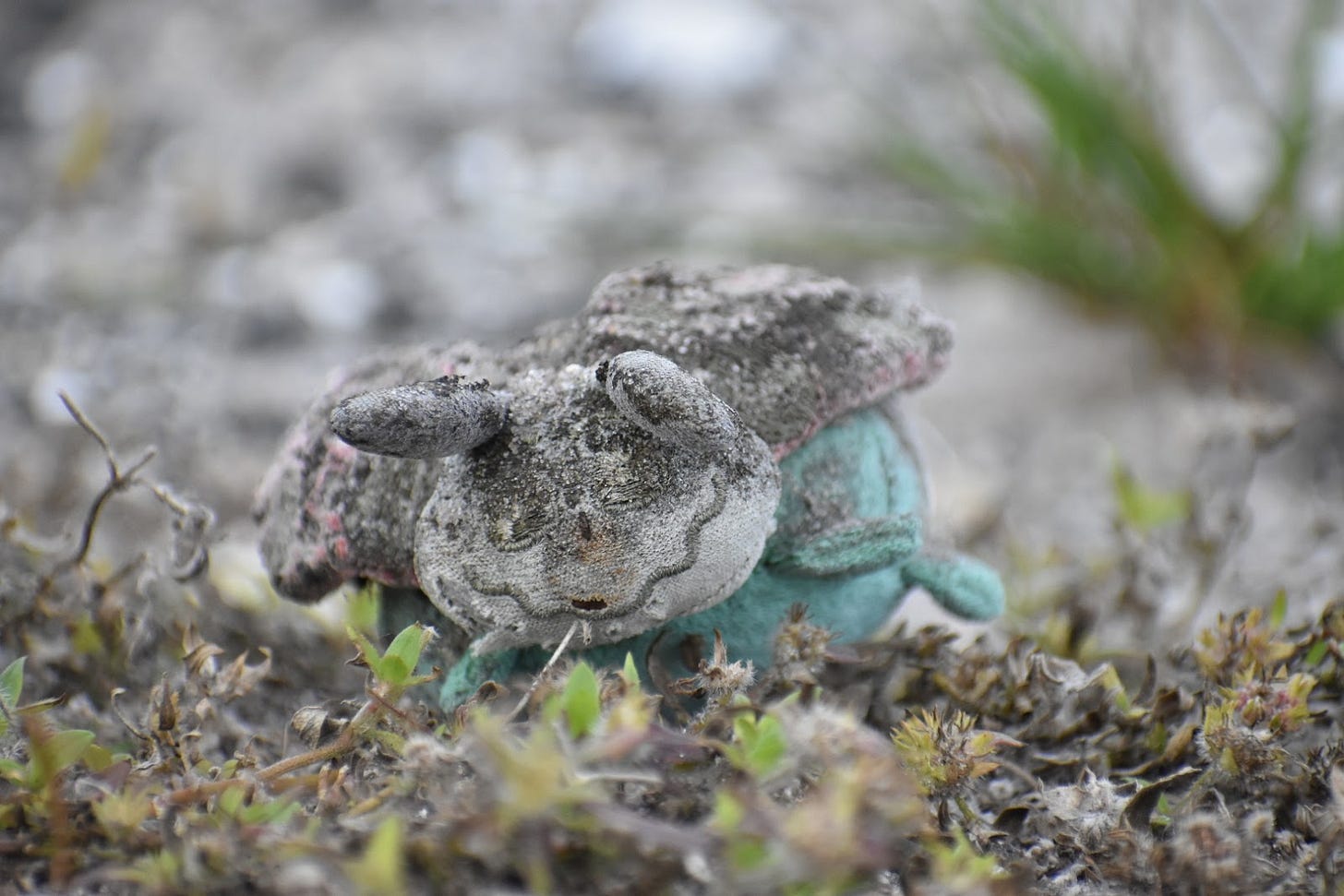
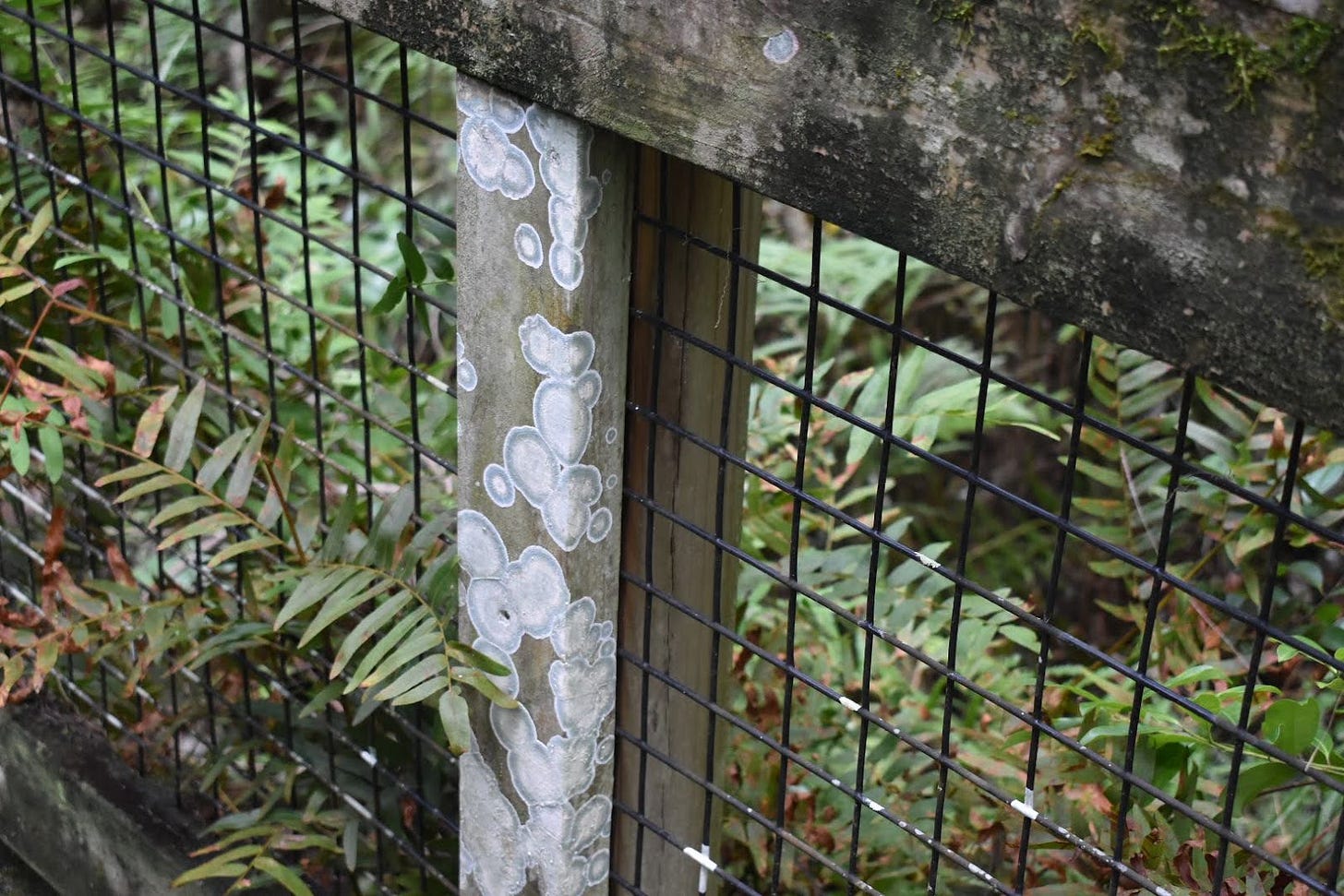
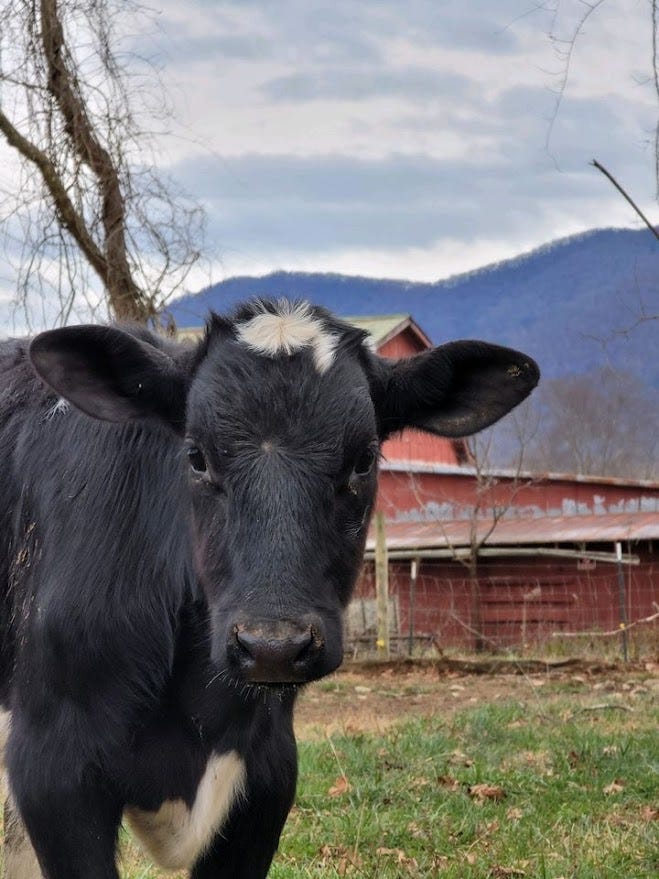
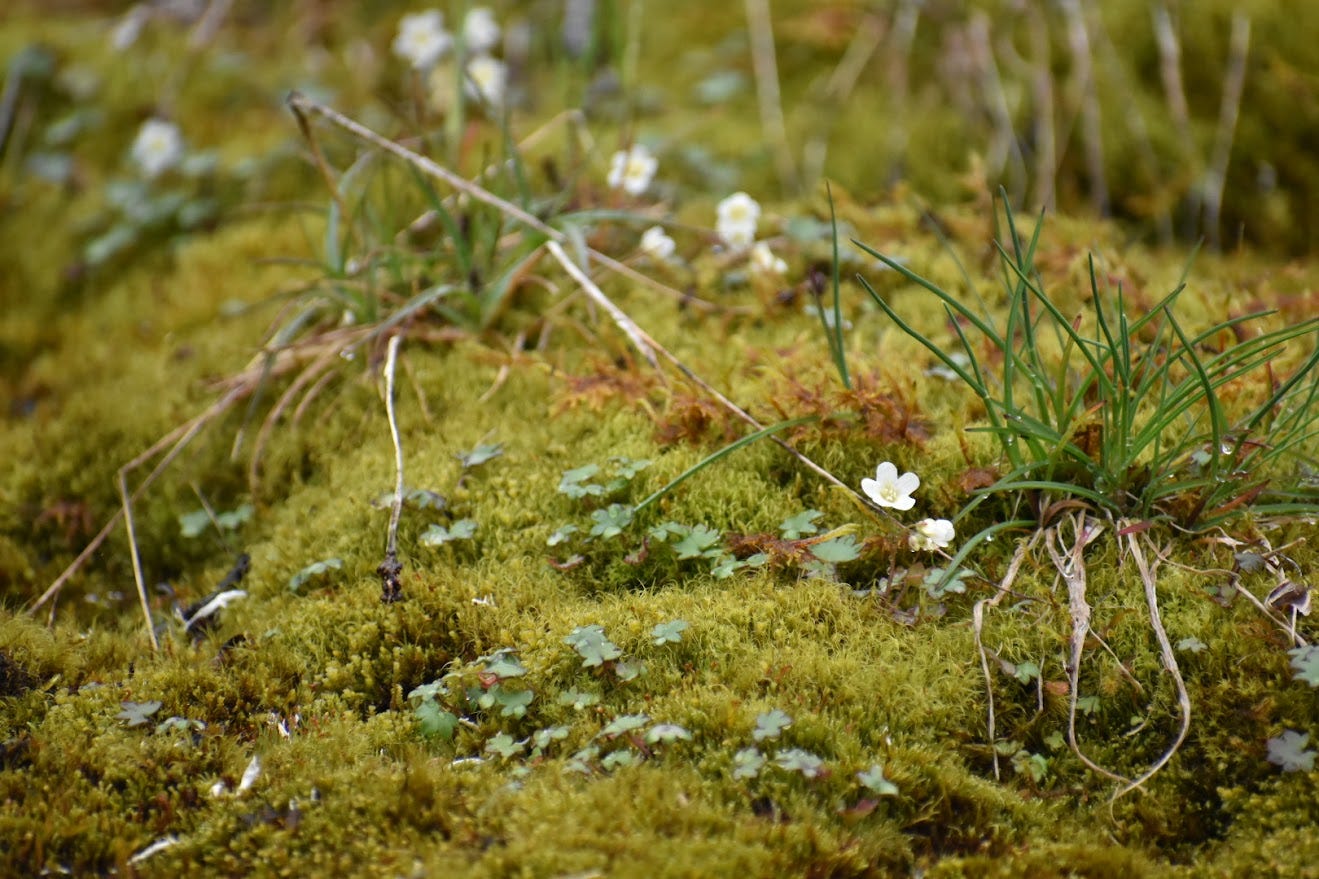

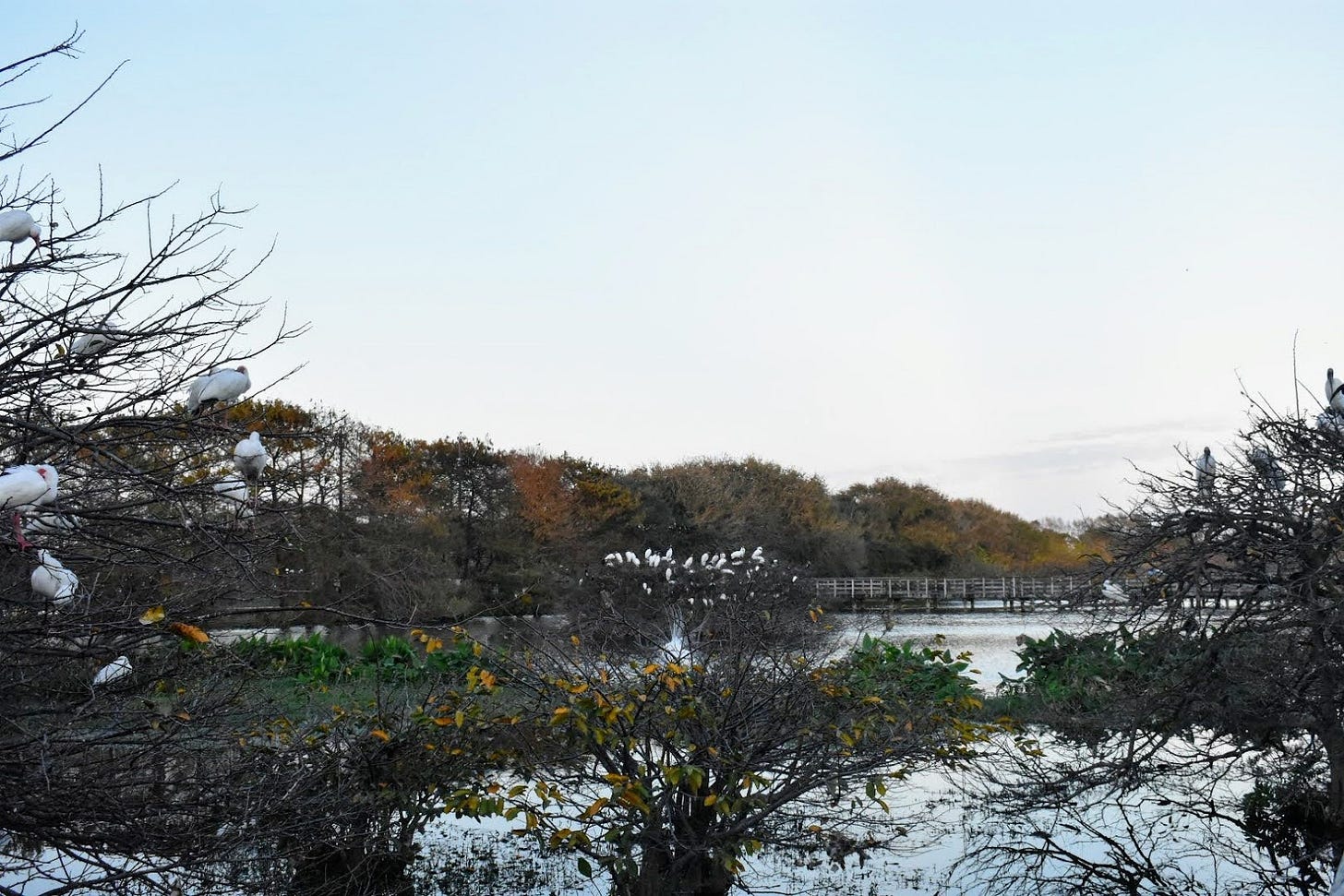
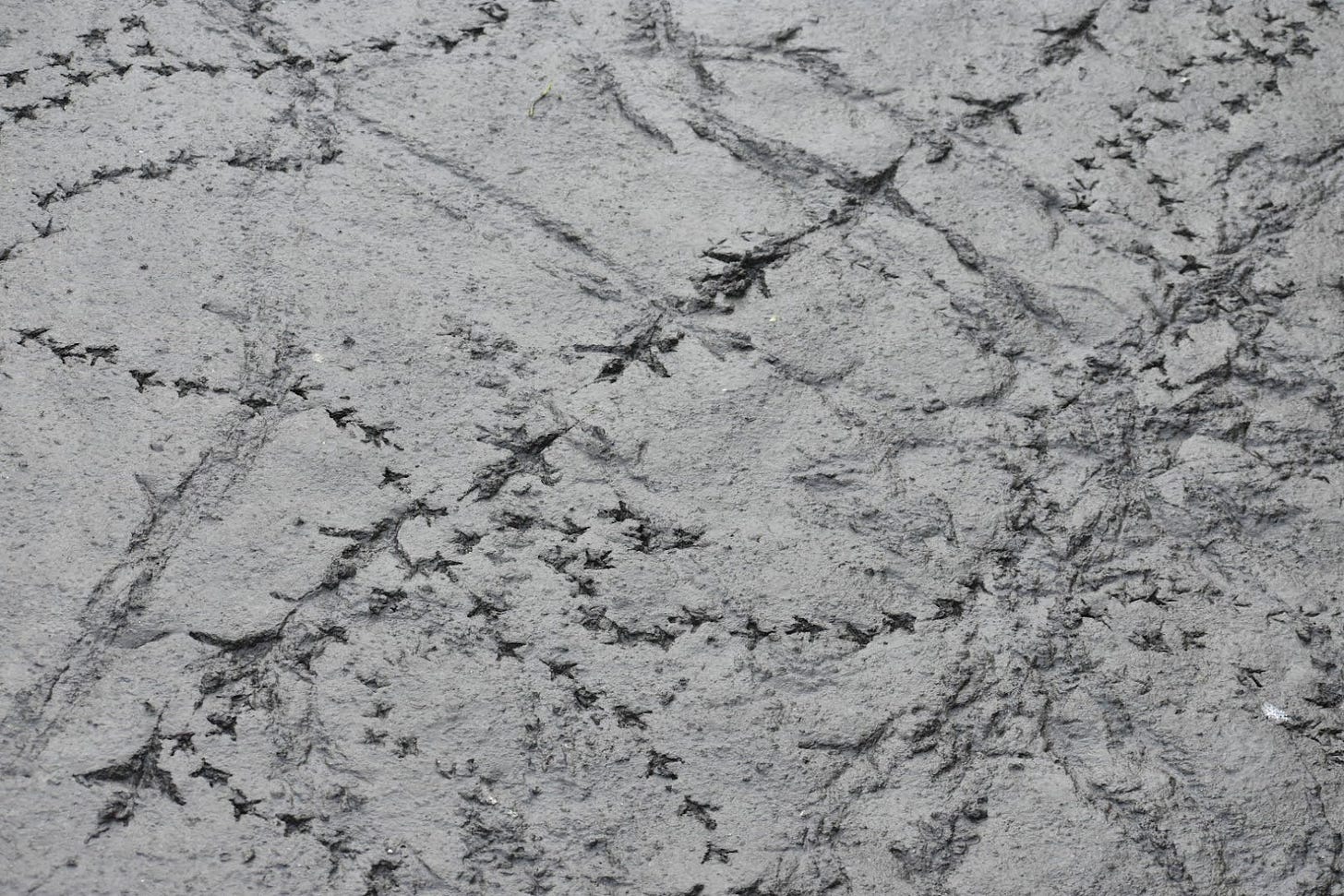
Some related musings in an earlier incarnation.
http://www.intergalacticmedicineshow.com/cgi-bin/mag.cgi?do=columns&vol=randall_hayes&article=010